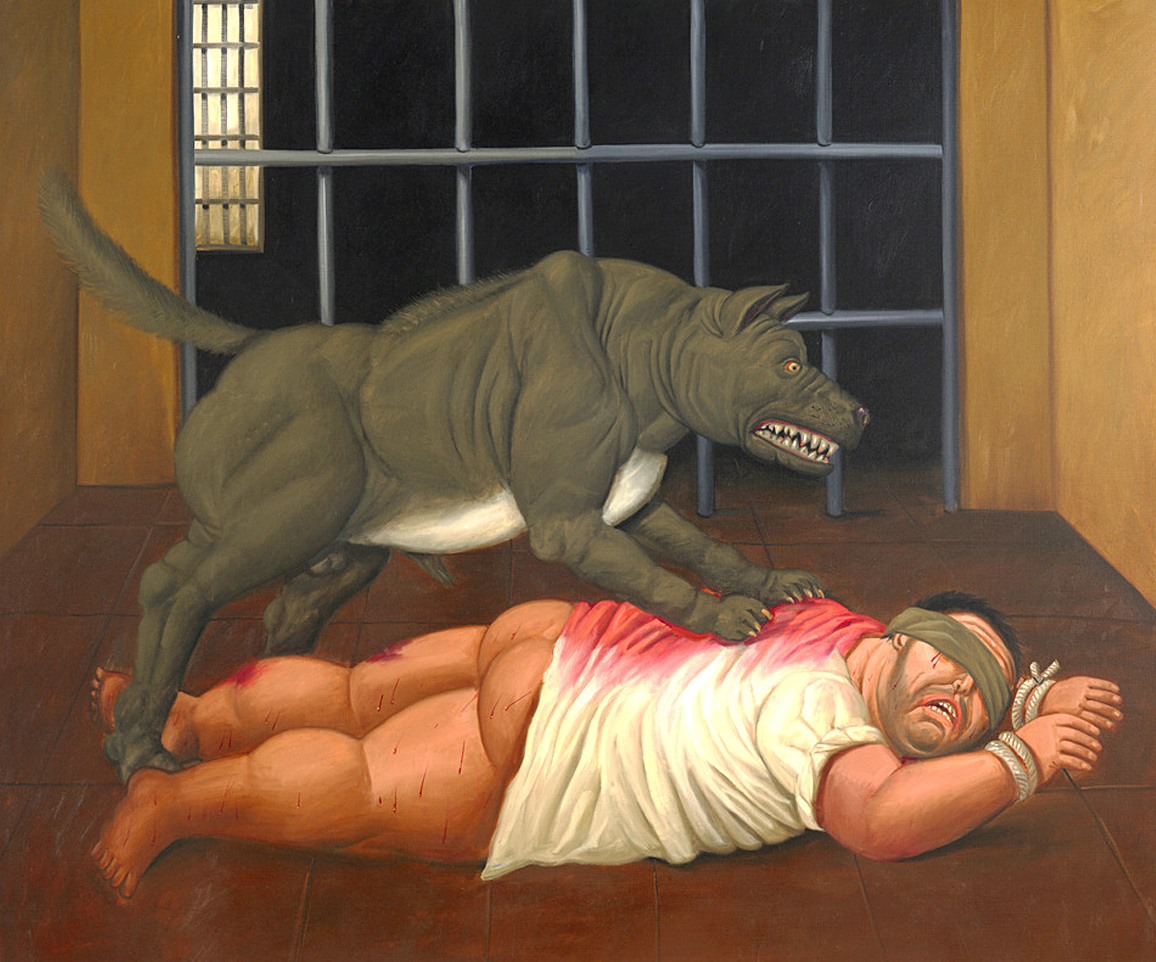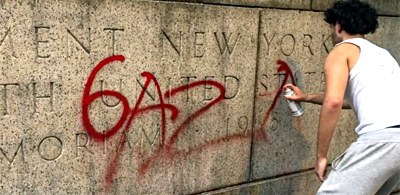Fernando Botero Paints Abu Ghraib
Many people are familiar with the artworks of famed Colombian artist, Fernando Botero. Even those who have never paid a visit to a gallery or museum have most likely seen Botero’s paintings reproduced as poster prints and postcards. His characteristically joyful landscapes and scenes peopled with contented individuals have won the hearts of millions around the world.
The 73-year-old artist is considered a modern master of Latin American art, and his lighthearted magical realist paintings featuring voluptuously inflated people and rotund animals have graced museums like the Metropolitan Museum of Art in New York City and the Kemper Museum of Contemporary Art in Kansas City, Missouri. His monumental bronze sculptures have been exhibited at New York’s Park Avenue, along the Champs-Elysees in Paris, and on Santa Monica Boulevard in Beverly Hills California.
Botero describes himself as “an artist from the Third World, or better put, an artist who was not born among museums.” His style is deeply influenced by pre-Columbian art (especially his sculpture), as well as the colonial and folk art of his native country.
Botero is a successful artist who has achieved popular acclaim as well as recognition from the art establishment. But lately his cheery and mild-mannered paintings have suddenly turned into works of profound and biting social commentary. Six years ago he began painting the bloody reality of his native Columbia, and just last year he exhibited paintings in Colombia’s capital of Bogotá that focused on his nation’s 40-year-old guerilla war.
However, Fernando Botero’s latest paintings go beyond anything he’s ever created in the past. He’s completed his masterwork, a suite of 50 large oil paintings depicting the horrors perpetrated by Americans at Iraq’s infamous Abu Ghraib prison.

Botero stated: “I, like everyone else, was shocked by the barbarity, especially because the United States is supposed to be this model of compassion.” The artist was so upset about what the US had done in Iraq that he set out to create a series of paintings that would forever etch the crime upon the collective consciousness of humanity.
Botero achieved nothing short of a contemporary equivalent to Pablo Picasso’s Guernica, the masterwork painted in outrage over the aerial bombing of civilians during the Spanish Civil War. Said Botero, “No one would have ever remembered the horrors of Guernica if not for the painting.”
And no one will ever forget the vision of hell Botero has committed to canvas with these startling oil paintings. Each work is titled Abu Ghraib and given a number from 1 to 50 to set them apart. Not that they need to be differentiated, because each oil is a unique and bone chilling representation of what US soldiers did to their prisoners behind Abu Ghraib’s silent and impenetrable walls.

The horrors committed at Abu Ghraib prison came to light last year when “trophy photos” taken by US soldiers became public. The explicit photographs showed US soldiers humiliating and torturing their prisoners. To date, seven US soldiers of low rank have been punished for their role in the abuses, however, it’s doubtful that upper echelon commanders or politicians will ever be brought to trial for the outrages.
Botero’s paintings are not so much inspired by the appalling photos as they are by the written descriptions of the cruelty. In one painting the artist shows a US soldier savagely beating a defenseless blindfolded prisoner, in another a naked prisoner is handcuffed to his cell wall as though crucified -with women’s underwear left on his head like a hood. Yet another of the forbidding works depicts three naked, hooded and trussed Iraqis heaped in a pyramid. All of the artist’s paintings in the series are based upon actual testimonies that came out of the prison scandal, and Botero’s paintings are imbued with an unflinching and indignant moral outrage.
Fernando Botero’s Abu Ghraib series is part of a larger exhibition of 150 of his works slated to open in Rome on June 16th of this year. The show then travels to Germany, and in 2006 the exhibit is scheduled to come to the United States. Botero has said his Abu Ghraib paintings will not be included in the US show -unless museums specifically ask for them.
Given that the owner of the Capobianco Gallery in San Francisco was assaulted, threatened with death, and run out of business in May of 2004 for showing a painting by Guy Colwell that also depicted US soldiers abusing prisoners at Abu Ghraib -it might be wise of Botero to exercise caution when exhibiting his masterworks in the US.
I hope the arts community will rally around Botero and find a way to convince exhibitors that his important new works must be shown in the United States.
UPDATE: Fernando Botero died on Sept. 15, 2023. He had pneumonia and Parkinson’s disease, and passed away in a hospital located in Monaco, the sovereign city-state on the French Rivera. The artist was 91-years old.
Botero’s Abu Ghraib paintings and drawings were exhibited at the Doe Library, located at the University of California, Berkeley, from Jan. 29 to March 25, 2007. They were also exhibited at the American University Museum in Washington, D.C., from Nov. 6 to Dec. 30, 2007.



